Fish Capture Technology
Fish capture technology encompasses the methods and tools used to catch fish from aquatic environments, ranging from traditional techniques like fishing nets to modern technologies like sonar and satellite tracking. Innovations in capture technology have enabled more efficient and precise harvesting, helping to reduce bycatch and minimize environmental damage. For example, precision fishing tools like GPS and sonar mapping systems allow fishers to target specific fish populations, avoiding overfishing and ensuring sustainable practices. Advances in sustainable fishing technologies, such as biodegradable nets and closed-loop aquaculture systems, aim to reduce the ecological impact of fishing operations. As global demand for seafood rises, these technologies are crucial in balancing the need for efficient fish capture with the preservation of marine ecosystems.

Perry Raso
Matunuck Oyster Farm, United States
J L Giovanna Hesley
Education Emerita, CropKing Inc., United States
Virendra Kumar Goswami
Indian Institute of Technology, India
Amit Das
Memorial University of Newfoundland, Canada
Mandeep Kaur
Panjab University, India
Pavarot Noranarttragoon
Department of Fisheries, Thailand



Title : Application of Artificial Intelligence and NISAR satellite to study the air sea CO2 exchange and aquatic toxicology to develop ‘Aquatic Pollution Remediation Technologies’(PART)
Virendra Kumar Goswami, Indian Institute of Technology, India
Title : Conditionally pathogenic microparasites (Microsporidia and Myxosporea) of mullet fish potential objects of mariculture in the Black and Azov Seas
Violetta M Yurakhno, A. O. Kovalevsky Institute of Biology of the Southern Seas of Russian Academy of Sciences, Russian Federation
Title : New approaches to assessing and managing the multispecies fishery in the Gulf of Thailand
Pavarot Noranarttragoon, Department of Fisheries, Thailand
Title : Integrating art, science and rural development: The multifaced role of aquarium keeping
T V Anna Mercy, Kerala University of Fisheries and Ocean Studies, India
Title : Seaweed aquaculture policy gap analyses in Indonesia, Kenya, and Tanzania
Megan Considine, The Nature Conservancy, Puerto Rico
Title : Utilizing art to enhance learning STEM subjects required for aquaculture
J L Giovanna Hesley, Education Emerita, CropKing Inc., United States